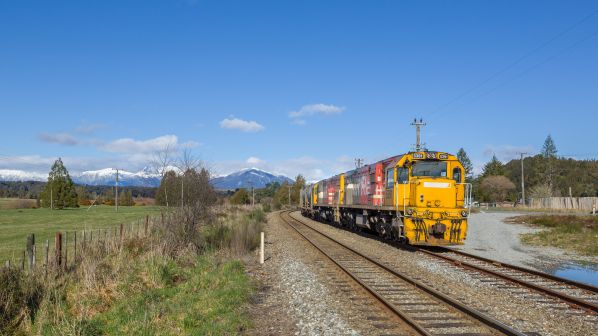THE New Zealand government has released its final New Zealand Rail Plan, which outlines its objectives for rail investment over the next decade with an initial focus on renewing the existing network and fleet to create a platform for expansion in subsequent rail plans.
“By 2052, freight tonnage in New Zealand is expected to increase by more than 40% and we would like to see the rail network play a role in supporting this growth,” the government says.
While the plan doesn’t commit funding to any particular projects, it does indicate the government’s priorities for rail investment. The full list of commitments is due to be included in the Rail Network Investment Programme (RNIP), the first of which is scheduled to be published in the middle of this year.
The government last year passed legislation to fund rail alongside other modes of transport such as road and air through the National Land Transport Fund (NLTF). The plan says the government is also exploring the introduction of track access charges to ensure rail users contribute to the NLTF. However, this will be carefully considered in light of the impact of Covid-19 on operators and passenger numbers.
The 2021 Value of Rail report released alongside the plan found that the total value of rail to the New Zealand economy was estimated at $NZ 1.7-2.14bn ($US 1.2-1.54bn) each year from reduced congestion by taking cars and lorries off the road; reduced greenhouse gas emissions and air pollution; improved road safety, including fewer injuries and fatalities; lower road maintenance costs for taxpayers; and fuel savings.
The plan outlines a number of key priorities for investment over the next 10 years:
- network renewals and maintenance, including investment in tracks, bridges, tunnels and signalling to improve service levels
- level crossing safety improvements
- the replacement of end-of-life locomotives and wagons with a modern, reliable and efficient fleet
- installation of Automatic Train Protection for all trains operating in urban areas and supporting the alignment between Auckland and Wellington’s train protection systems
- mechanical depot upgrades and renewals, with improved workshop layouts, safety and productivity enhancements and seismic strengthening at a number of maintenance facilities, including Hutt Valley, Auckland, and Christchurch
- the design and procurement of two ferries to replace the ageing Interislander fleet and associated landside assets, and
- core asset renewals, such as mechanical overhauls and parts replacement for the existing fleet of locomotives and wagons, freight handling equipment, hoists, generators, and enabling technology.
There are also further opportunities to support the rail freight and tourism sectors, which present strong opportunities for growth with targeted strategic investment. The plan says future priorities could include:
- more regional routes and improved logistics hubs
- additional infrastructure and rolling stock to support growth opportunities and regional initiatives
- further investments to respond to the climate emergency and decarbonise the transport sector, including further electrification of the Auckland - Wellington North Island Main Trunk line (NIMT) and associated rolling stock, and
- investigating regulatory rail opportunities.
KiwiRail could also potentially undertake more extensive network upgrades to accelerate and increase service levels, including:
- re-opening the Stratford - Okahukura line
- completing the upgrade of rail in Northland
- further consideration of Marsden branch line
- track doubling of the Auckland - Hamilton line
- increasing axle loads to 20 tonnes on the Auckland - Tauranga line
- increasing the axle loads on other lines in the “golden triangle” between Auckland, Hamilton and Tauranga to 18 tonnes
- standardising passing loop lengths between Palmerston North and Waikanae, and
- increasing axle loads on the South Island to 18 tonnes.
“The beauty of the Rail Plan, and the related work programme, is that for the first time KiwiRail has certainty about investment in the network,” says KiwiRail chief executive, Mr Greg Miller. “For us, that means we can recruit staff and take on apprentices knowing that a 10-year pipeline of work is in front of us. It also gives us certainty about procurement because we know there will be investment in the network.”

